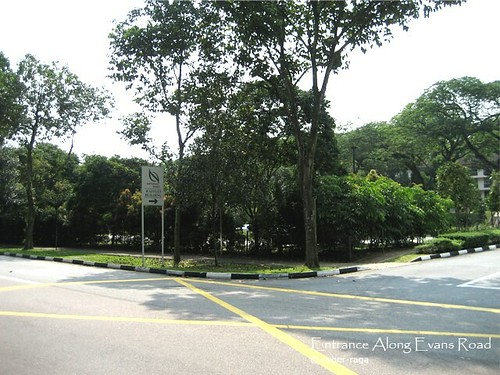 |
| Entry to Raffles Building from Evans Road (Refer to Map @ Location 'A') |
Recently, I have stumbled upon an interesting garden patches at Raffles Building along Evans Road, as I was taking a brisk walk from Bukit Timah Road to the Singapore Botanic Garden (SGB). Raffles Building which housed the headquarters of our National Parks Board (NParks), is within walking distance (about 10-15 minutes) from NUS Bukit Timah Campus, Jacob Ballas Children's Garden and Visitor Centre of Singapore Botanic Gardens. Refer to part map below:
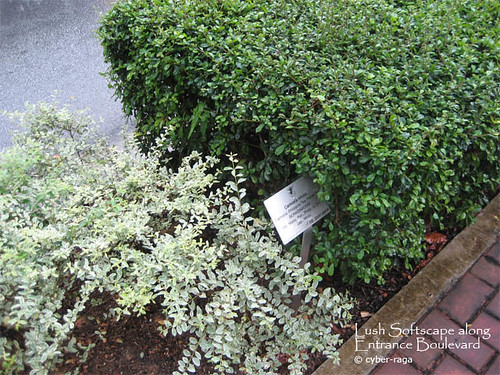 |
Top: Duranta erecta (left) and Carmona retusa (right) make a perfect planting palete as clipped hedge along the boulevard. |
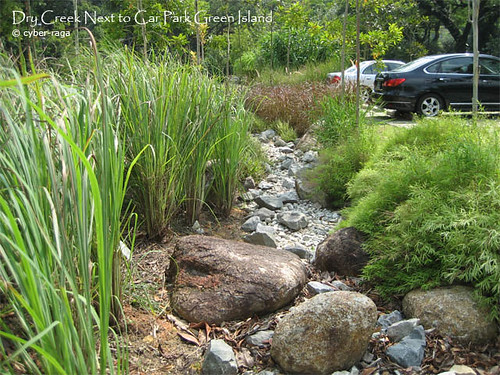 |
| Top & Bottom: A natural look is added to the meandering creek compliment by 'grassy' shrub and weathered granite rocks of various sizes. |
 |
Top: Dry creek along side of footpath between car parks and Raffles Building. Bottom: Slope embankment along roadway allows surface water run-off into the creek near Location'C'. |
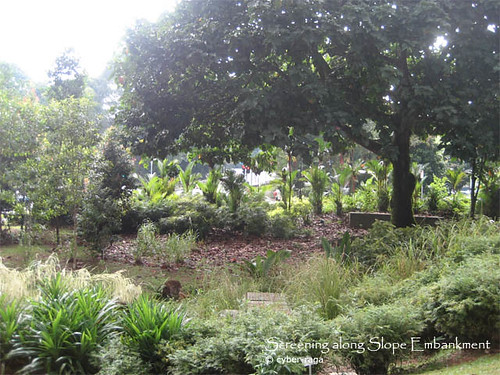 |
Dense foliages screen the building and green plots from the adjacent Evans Road.(Location 'C') |
My interpretation of the new landscape design concept could be:
- To create an inward-looking landscape design, which featured a 'dry creek' which doubled as a hardscape and waterway; backed with lush softscape within the existing urban context.
The dry creek is basically a gently sloped 'earth drain' that is filled with small to medium-sized granite rocks to form the stream bottom. Larger rock boulders are placed along the stream embankment to create focal point and add a sculptural feel to the overall design.
The meandering creek is designed to look like a 'dry stream' during the non raining day. Whereas during a heavy downpour, I would imagined the transformation of the creek into a water stream which collects rainwaters as well as the surface waters run-off from the adjoining greens. The water is then channelled to the surface drainage system.
Layers of reed-like softscape are planted along the slope embankment to add a soft touch and colors to the dry creek. I have observed the following plants that consists of waterlogged tolerant terrestrial plants as well as occasional drought period:
SHRUBS
Bambusa multiplex var. multiplex (Oriental Hedge Bamboo)
Bambusa multiplex (Hedge Bamboo)
Bambusa multiplex (Hedge Bamboo)
Cymbopogon citraus (Lemon Grass)
Cyperus alternifolius (Umbrella Plant)
Cyperus alternifolius (Umbrella Plant)
Dianella ensifolia (Variegated Common Dianella)
Hymenocallis speciosa (Spider Lily)
Leea rubra (Red Tree Shrub)
Leea guineensis 'Burgundy' (REd Tree-Vine)
Miscanthus floridulus (Japanese Silver Grass)
Neomarica longifolia (Yellow Walking Iris)
Pandanus pygmaeus (Small Screwpine)
Pennisetum setaceum 'Rubrum' (Purple Fountain Grass)
Sanchezia speciosa (Zebra Plant)
Stenotaphrum secundatum 'Variegatum' (Variegated Buffalo Grass)
Themeda arguens (Christmas Grass)
Vetiveria sp.
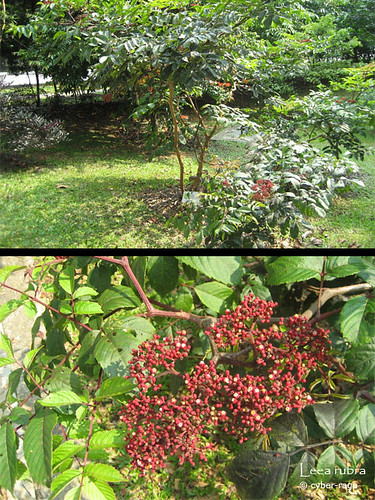 |
| Leea rubra (Red Tree Shrub) |
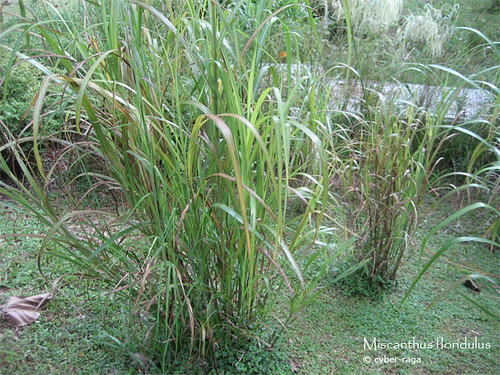 |
| Miscanthus floridulus (Japanese Silver Grass) |
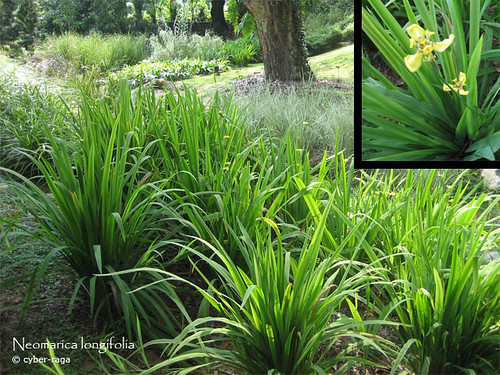 |
| Neomarica longifolia (Yellow Walking Iris) with long slender grass-like leaves. |
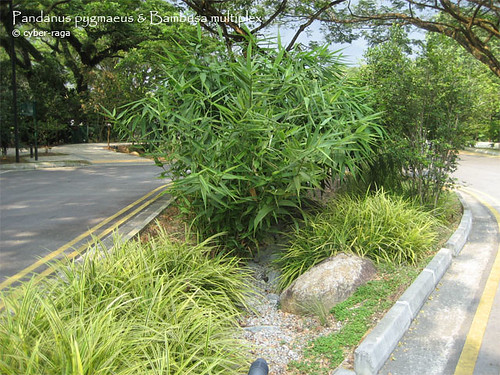 |
| Pandanus pygmaeus (Small Screwpine) at foreground, backed by Bambusa multiplex (Hedge Bamboo) behind. |
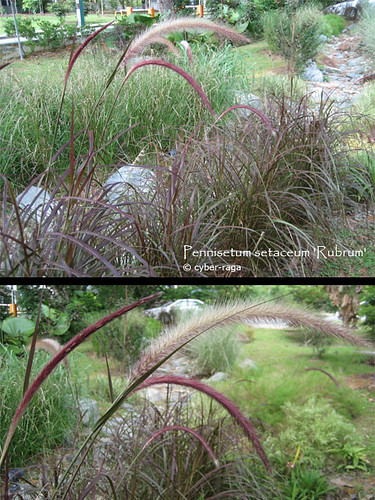 |
Although Pennisetum setaceum 'Rubrum' (Purple Fountain Grass) stands out in the crowd, it may causes some skin irritation if you are in contact with its leaves. |
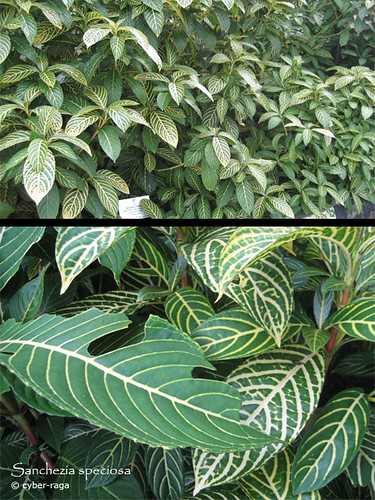 |
| Sanchezia speciosa (Zebra Plant) adds visual interest. |
 |
| Stenotaphrum secundatum 'Variegatum' (Variegated Buffalo Grass) |
 |
| Themeda arguens (Christmas Grass) |
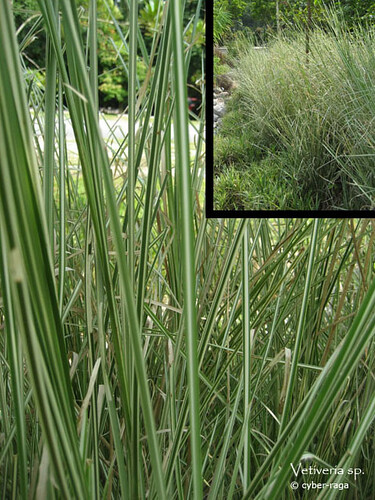 |
| Vetiveria sp. |
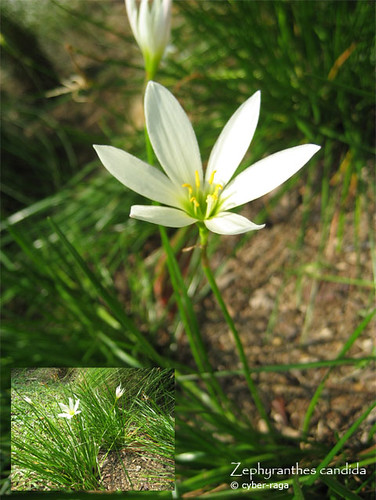 |
| Zephyranthes candida (Fairy Lily) |
PALMS
Johannesteijsmannia lanceolata (Slender Joey)
Licuala grandis (Ruffled Fan Palm)
Licuala spinosa (Mangrove Fan Palm)
 |
| Johannesteijsmannia lanceolata (Slender Joey) with sculptural leaf form, like a dancer in green. |
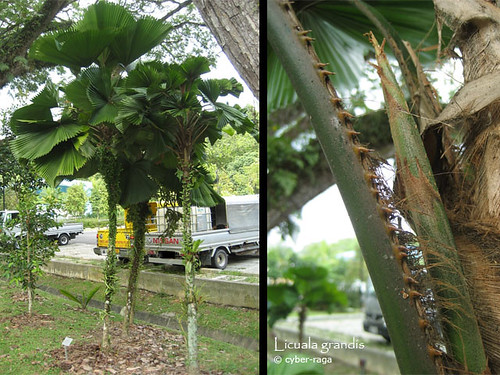 |
Cluster of Licuala grandis (Ruffled Fan Palm) is best arranged in various heights, to create interest and visual impact. |
 |
Licuala spinosa (Mangrove Fan Palm).Thorns along the leaf branch are seen in these palms featured above. |
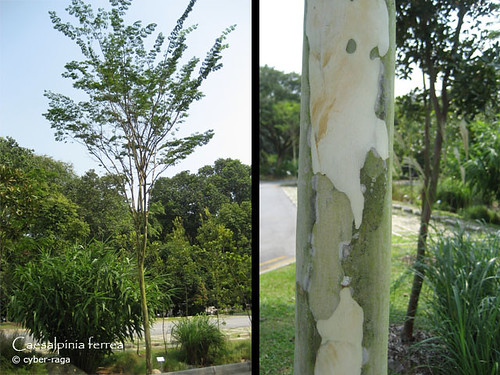 |
| Caesalpinia ferrea (Leopard Tree) with bark showing beautiful coloration. |
Caesalpinia ferrea (Leopard Tree)
Centotheca lappacea (Rumput Lilit Kain)
Eugenia victoriana (Sundrop)
Psidium cattleianum (Strawberry Guava)
Psidium guineense x guajava
Samanea saman (Rain Tree)
Syzygium antisepticum (Shore Eugenia)
Samanea saman (Rain Tree)
Syzygium antisepticum (Shore Eugenia)
Syzygium incarnatum (Shaggy-barked Eugenia)
Syzygium zeylanicum (Spicate Eugenia)
Tristaniopsis merguensis (Pelawan Tundak)
Tristaniopsis obovata (Sea Tristania)
Tristaniopsis whiteana (River Tristania)
 |
| Syzygium antisepticum (Shore Eugenia) with reddish-yellow new leaves. |
 |
| Syzygium zeylanicum (Spicate Eugenia) |
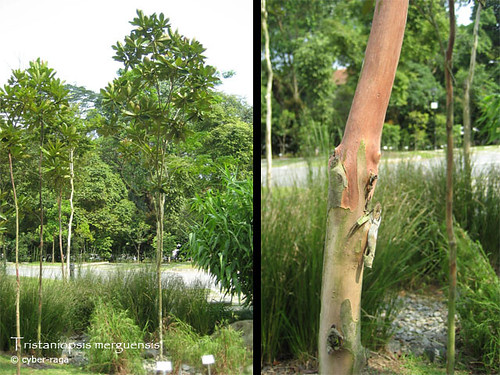 |
| Tristaniopsis merguensis (Pelawan Tundak) |
 |
| Right: Tristaniopsis obovata (Sea Tristania) & Close-up of trunk Left: Caesalpinia ferrea (Leopard Tree) |
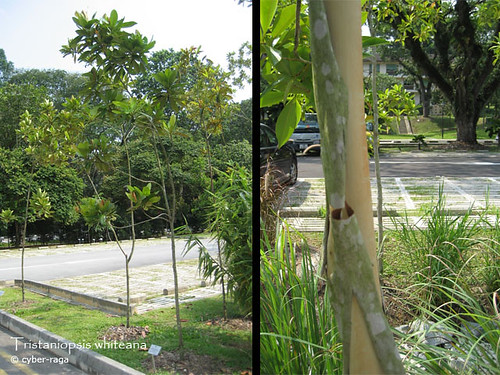 |
| Tristaniopsis whiteana (River Tristania) |
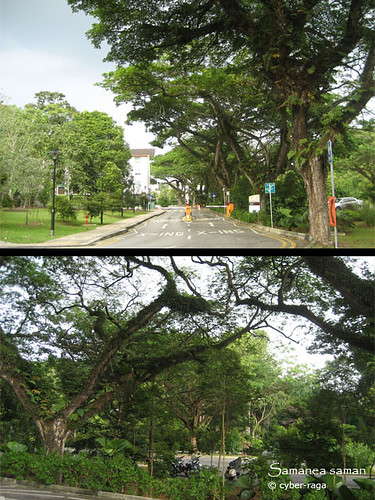 |
Existing Samanea saman (Rain Tree) with overhanging canopies, give ones a tropical feel. |
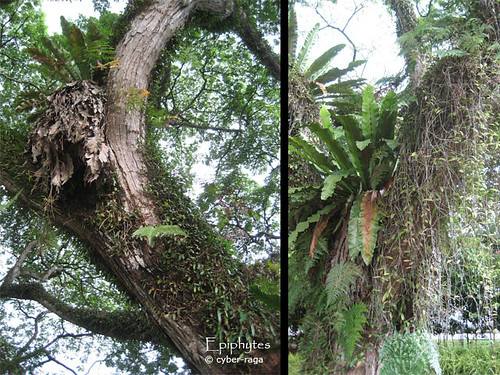 |
| Existing trees are home to many diverse epiphytes. |
Landscape up-lighters are incorporated into creek design to illuminate the boulder and softscape during nightfall; it furthers add an aesthetic value to the creek.
Existing trees, such as Samanea saman (Rain Tree) along Evans Road/Cluny Road and within the car park areas provide shade to the new shrubs underneath its umbrella-shaped canopy. The existing tree provide a matured look and 'nostalgic feel' to the overall landscape setting. Together with the new landscape, it continues to sustain the microclimate for the existing fauna and flora (epiphytes such as Hoya sp, ferns and orchids).
 |
Pavement in timber looked-alike finish, leads visitors to the pond area at round-about (Map Location 'D'). Tourists can be seen enjoying the pond while waiting for the coaches at the same time. |
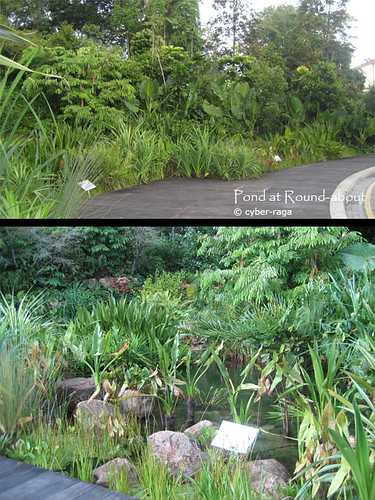 |
| Pond at closer view. Diversity in aquatic plant species are used to create the water garden. |
I personally think that the new landscape have succeeded in adding a soft touch to the otherwise hard-paved car parks. At the same time it also provides serenity to a garden for one's quiet contemplation.

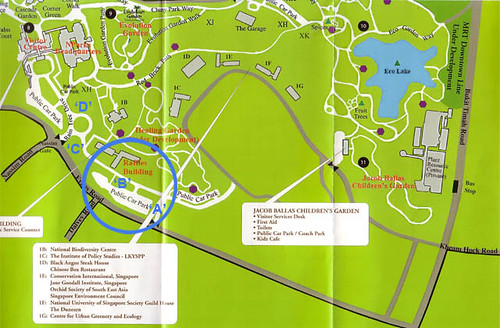
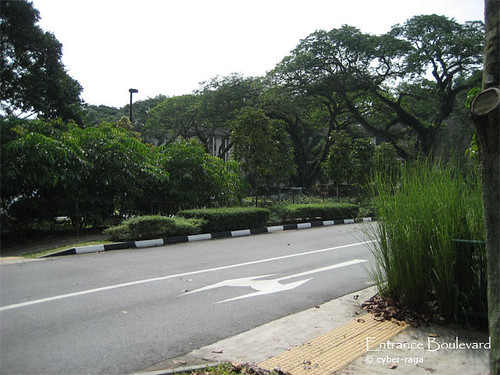
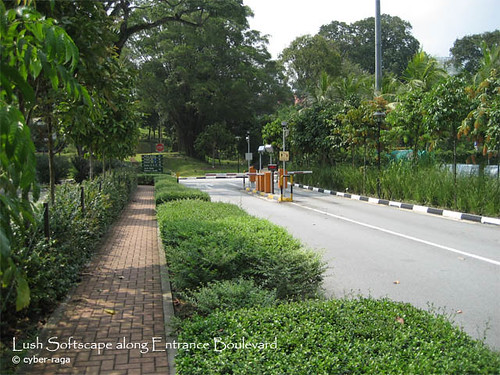
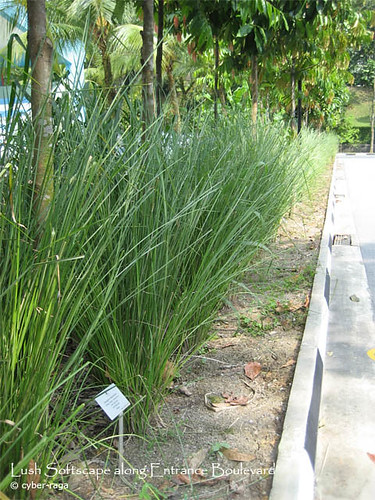
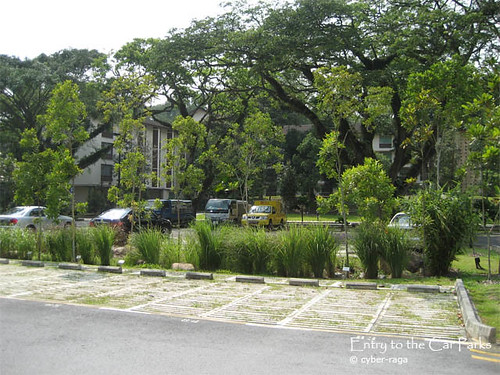
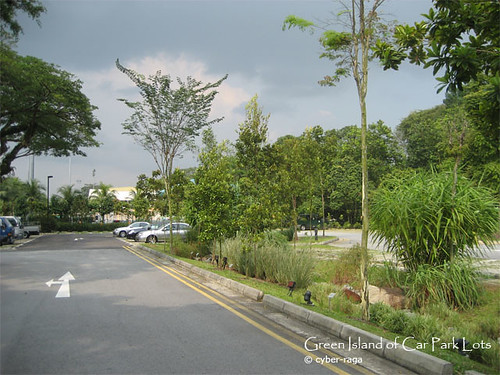
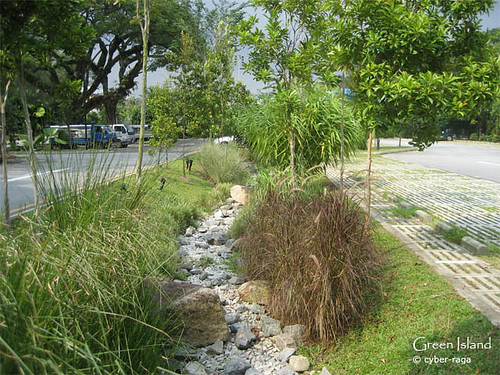
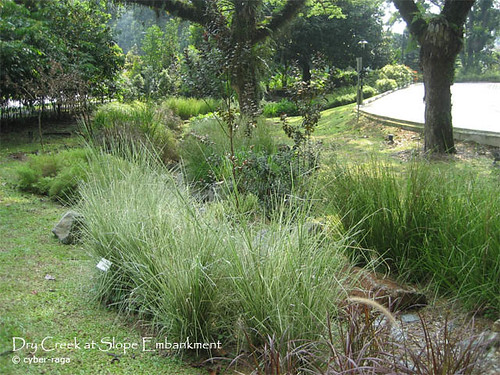
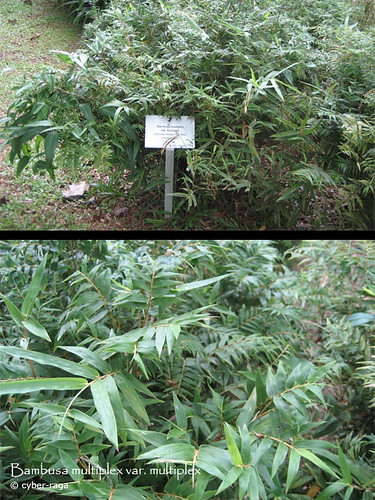
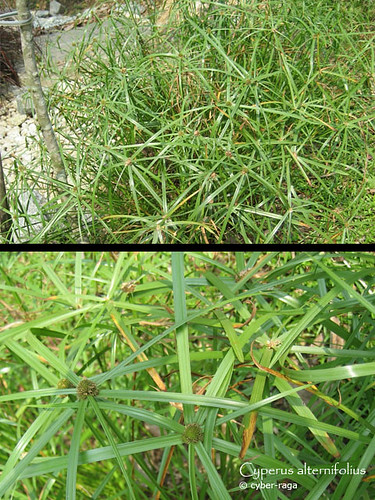
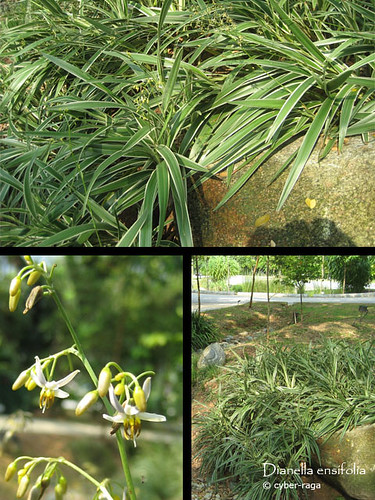
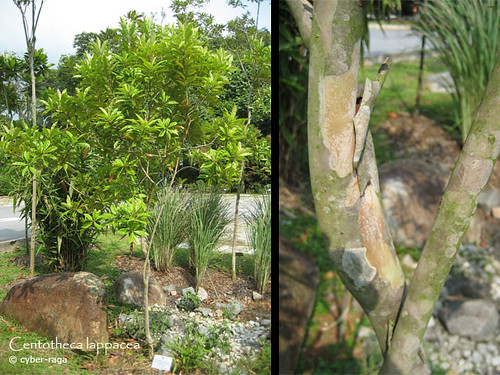
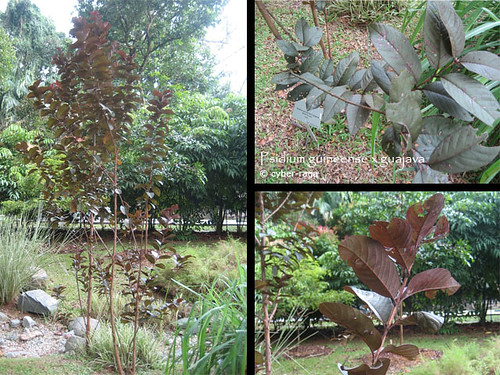
The rounder palm is not Licuala grandis but Licuala peltata cv 'Sumawongii' ~islaverde
ReplyDeleteThanks islaverde for pointing out.
ReplyDeleteI've checked and think you meant by Johannesteijsmannia lanceolata shall be corrected as Licuala peltata cv 'Sumawongii'?